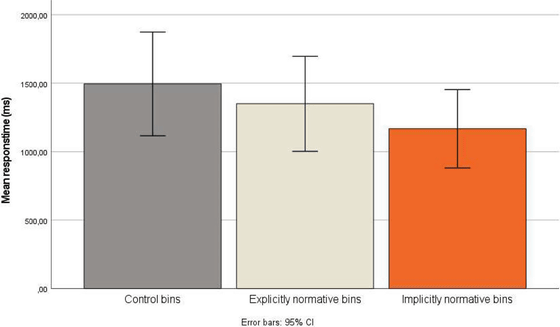Does the design of a trash can affect the amount of trash thrown away? What are the results of comparing trash cans designed with gray, orange, and children's drawings?

To investigate whether the design of a trash can affects the amount of trash thrown in it, researchers at the University of Gävle in Sweden, who specialize in architectural engineering and energy systems, compared the amount of trash thrown in three different types of trash cans: a solid gray trash can that blends in with the cityscape, a bright orange trash can, and a trash can with a child's drawing printed on it to encourage people to avoid littering.
Managing waste behavior by manipulating the normative appeal of trash bins: Lessons from an urban field experiment - ScienceDirect
Rubbish bins designed with children's drawings rejected by residents
https://phys.org/news/2023-11-rubbish-bins-children-residents.html

Researchers at the University of Gävle have changed the appearance of nine trash cans in the city of Gävle , a city in central Sweden, in the belief that changing the appearance of the trash cans could change the impression on passersby and reduce littering.
The researchers installed three types of trash cans: 'A' on the far left is a gray trash can that is normally installed in the city. 'B' is a trash can with an anti-littering poster drawn by young children printed on it. 'C' is an orange-colored one that stands out.

After setting up three bins of each type, the researchers measured the weight and volume of trash in the bins every day for a month, rotating the bins' positions so that all types of bins were present in all locations.
The results showed that the most effective bins were the orange ones, collecting over 2kg of rubbish on average, followed by the grey ones at 1.5kg, and the ones with children's drawings at just 0.5kg.
'Our assumption was that the orange trash cans and the trash cans with children's drawings would collect more litter than the traditional, inconspicuous grey trash cans,' said Patrick Solqvist, a psychology professor who participated in the study. 'But the results showed that while the orange color had a strong effect, the children's drawings had a surprisingly weak effect. This is probably because the children's drawings were a normative message against littering, which evoked a sense of repulsion in people. If you're trying to influence people's behaviour, using normative messages is not always an effective way to do it.'
The weak effect of the trash can with a child's drawing may have been due to the fact that it was less noticeable as a trash can. Therefore, as a supplementary study, the research team showed photos of trash cans to several participants. The graph below shows a bar graph of the traditional gray, the child's drawing, and the orange trash can from the left, and the vertical axis shows the 'time it takes to notice that there is a trash can in the photo.' According to the graph, orange is the most noticeable, but the trash can with the child's drawing was easier to find than the gray trash can.

Given the stark discrepancy between prior assumptions and experimental results, 'the results of this study highlight the importance of evaluating the effectiveness of various solutions before deploying them on a large scale,' Solqvist points out.
Orange trash cans are conspicuous, so they are likely to have been effective in making people on the street think, 'If there is a trash can, I'll throw it away there.' However, there is also the problem that flashy orange trash cans do not blend in with the urban environment as much as gray trash cans. On the other hand, even if less effective trash cans are installed with consideration for the urban environment, littering will increase, not only worsening the scenery, but also leading to serious environmental pollution. 'We need a stylish solution that maximizes practicality while taking the scenery into consideration,' says Solqvist.
Related Posts:
in Design, Posted by log1e_dh







